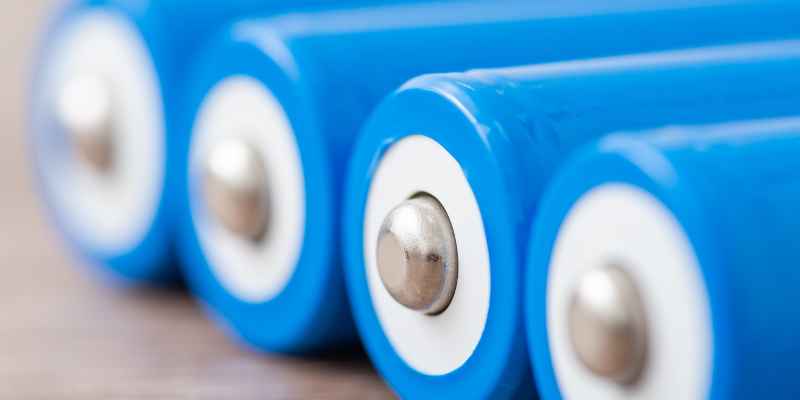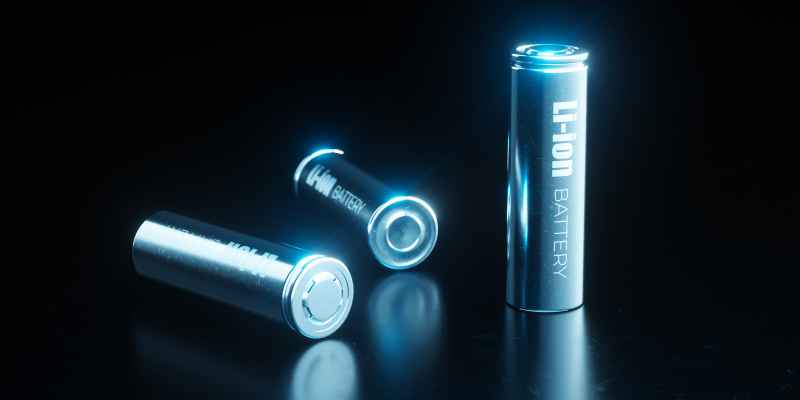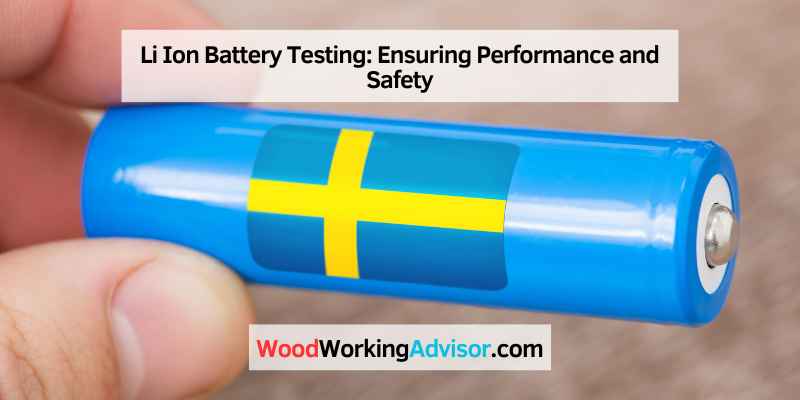Li Ion battery testing is a crucial step in ensuring the safety, performance, and reliability of these batteries. In the test, various factors, such as capacity, cycle life, safety, and environmental conditions, are examined to evaluate the battery’s overall quality and suitability for specific applications.
As the demand for Li Ion batteries continues to grow in industries like automotive, electronics, and renewable energy, testing plays a vital role in determining their integrity and safety. Capacity tests measure the battery’s ability to store and release energy, while cycle life tests simulate real-world usage conditions to gauge its longevity.
Safety tests assess the battery’s response to extreme temperatures, impact, and overcharging, ensuring it doesn’t pose any hazards. Environmental tests, on the other hand, evaluate the battery’s performance in varying conditions, including temperature and humidity. By conducting thorough Li Ion battery testing, manufacturers can deliver reliable and safe batteries to meet the diverse needs of consumers and industries.

Fundamentals Of Li Ion Batteries
Li Ion Batteries are essential in today’s technological landscape. Understanding their Structure and Function as well as the Chemistry Behind Li Ion Batteries is crucial for efficient Li Ion Battery Testing.
Structure And Function
Li Ion Batteries consist of cathode, anode, and electrolyte layers. The cathode stores ions, the anode releases them, and the electrolyte layer allows ions to move between the two.
Chemistry Behind Li Ion Batteries
Lithium ions move from the cathode to anode during charging. During discharge, they move back. This movement is facilitated by the electrolyte that allows ion transport while maintaining the charge balance.
Performance Testing
Performance Testing is essential in assessing the reliability and efficiency of Li Ion battery systems. Conducting comprehensive tests helps ensure that the batteries meet performance standards, safety regulations, and customer expectations. By simulating real-life conditions, performance testing plays a crucial role in validating the quality and durability of Li Ion batteries.
When it comes to Li-ion battery testing, performance testing plays a crucial role in determining the overall capability and efficiency of the battery. This type of testing involves assessing various important aspects such as capacity, energy, cycling, and efficiency. By thoroughly evaluating these parameters, it is possible to gauge the reliability and performance of Li-ion batteries in different applications.
Capacity And Energy Testing
Capacity and energy testing is an essential part of performance testing for Li-ion batteries. Capacity refers to the amount of charge a battery can store, while energy is the total amount of work the battery can perform. These two parameters are indispensable when it comes to choosing the right battery for specific applications. During testing, the capacity and energy of the battery are measured under different conditions and loads to understand its performance capabilities.
- Capacity and energy testing helps in determining how long a battery can last on a single charge.
- It also provides insights into the battery’s ability to deliver power consistently over time.
- By testing capacity and energy, manufacturers can ensure that their batteries meet the specified requirements and fulfill the expectations of end-users.
Cycling And Efficiency Testing
Cycling and efficiency testing are equally crucial aspects of performance testing for Li-ion batteries. Cycling refers to the process of discharging and recharging a battery multiple times to simulate real-world usage scenarios. Efficiency, on the other hand, measures how effectively the battery converts stored energy into useful work. Together, these tests provide valuable information about the battery’s durability and optimal usage.
- Cycling testing helps in assessing the battery’s ability to withstand repeated charging and discharging cycles without significant degradation in performance.
- Efficiency testing enables manufacturers to identify any energy losses and measure the battery’s overall efficiency.
- By conducting these tests, battery manufacturers can optimize their design and ensure maximum energy utilization.
In conclusion, performance testing is an integral part of evaluating the capabilities of Li-ion batteries. Capacity and energy testing allow manufacturers to understand the battery’s storage and delivery capabilities, while cycling and efficiency testing provide insights into its durability and energy conversion efficiency. By conducting these comprehensive tests, manufacturers can develop high-performance Li-ion batteries that meet the demands of various applications.
Safety Testing
Ensuring the safety of lithium-ion batteries is paramount as they power a wide array of devices from smartphones to electric vehicles. Safety testing of these batteries involves various critical assessments to mitigate potential hazards.
Overcharge And Overdischarge Testing
Overcharge and overdischarge testing are essential to evaluate the behavior of lithium-ion batteries under extreme conditions. An overcharged battery can result in thermal runaway, leading to safety hazards, while overdischarging can cause irreversible damage to the battery.
Thermal Runaway Testing
Thermal runaway testing is crucial in assessing the battery’s stability when exposed to high temperatures. It involves subjecting the battery to extreme heat to observe its reaction and ability to tolerate such conditions without posing a safety risk. This test helps in designing batteries with enhanced thermal management systems.
Environmental Testing
Environmental testing is crucial in evaluating the performance and durability of Li-ion batteries. It involves subjecting the batteries to various conditions to simulate real-world scenarios and assess their resilience. The environmental factors that are typically tested include temperature, humidity, and vibration, to ensure the safety and reliability of the batteries in diverse conditions.
Temperature Testing
Temperature testing is a fundamental aspect of Li-ion battery evaluation. It assesses the battery’s performance and safety under extreme temperature conditions. The test is conducted by exposing the battery to both high and low temperatures to study its behavior and performance. It is essential to determine the battery’s ability to withstand temperature fluctuations without compromising its functionality or safety.
Humidity And Vibration Testing
Humidity and vibration testing are equally important in evaluating the robustness of Li-ion batteries. Humidity testing assesses the battery’s resistance to moisture and humidity, which are common environmental factors that can affect battery performance. On the other hand, vibration testing aims to simulate the effects of vibrations that the battery might experience during transportation or usage, ensuring that it remains stable and functional.
Regulatory Standards And Compliance
When it comes to Li Ion battery testing, adhering to regulatory standards and compliance is of utmost importance. International regulations and industry standards play a crucial role in ensuring the safety, reliability, and performance of these batteries. By following these guidelines, manufacturers can guarantee that their products meet the required quality standards and legal obligations.
International Regulations
Li Ion batteries are subject to various international regulations to ensure their safe use and transportation. One such important regulation is the UN Manual of Tests and Criteria (UN 38.3). This guideline mandates specific tests that batteries must undergo to determine their compliance with safety requirements. Tests include vibration, shock, and thermal abuse simulations, as well as electrical and mechanical abuse tests.
In addition to the UN 38.3, other regulations such as the International Civil Aviation Organization (ICAO) Technical Instructions for the Safe Transport of Dangerous Goods by Air and the International Maritime Dangerous Goods (IMDG) Code provide specific guidelines for the transport of Li Ion batteries by air and sea respectively. These regulations help minimize the risk of fire, explosion, or leakage during transportation, ensuring the safety of personnel and equipment.
Industry Standards
Besides international regulations, industry standards set by organizations like the International Electrotechnical Commission (IEC) and Underwriters Laboratories (UL) further enhance the testing and certification processes for Li Ion batteries. The IEC 62133 standard, for example, focuses on the safety requirements for secondary cells and batteries containing alkaline or other non-acid electrolytes.
UL standards, on the other hand, ensure the reliability and safety of Li Ion batteries for both consumer and industrial applications. UL 2054, specifically developed to evaluate the safety of portable battery packs, covers aspects such as electrical, mechanical, thermal, and environmental performance criteria.
- IEC 62133 standard emphasizes safety requirements for secondary cells and batteries.
- UL 2054 evaluates the safety of portable battery packs.
By adhering to these industry standards, manufacturers can confidently provide products that meet or exceed the expectations of their customers and regulatory bodies alike. In turn, this fosters trust in the market and ensures the widespread adoption of Li Ion battery technology.
Advanced Testing Techniques
In-situ Testing Methods
Employed to evaluate Li-ion batteries during operation.
Non-destructive Testing Techniques
Conducted without causing harm to the battery components.
Conclusion And Future Outlook
With respect to Li Ion battery testing, a look into the future reveals promising advancements and a strong potential for improved performance and reliability. These developments pave the way for a more efficient and sustainable energy storage solution.
Importance Of Continuous Testing
In the realm of Li-ion battery testing, maintaining consistent testing protocols is crucial. Regular testing ensures safety and reliability of battery systems, highlighting any potential issues early on.
Emerging Trends In Li Ion Battery Testing
The field of Li-ion battery testing is constantly evolving. Advanced testing methods, such as real-time monitoring and AI-driven analytics, are shaping the future of battery technology.

Frequently Asked Questions Of Li Ion Battery Testing
What Are The Advantages Of Li Ion Batteries?
Li Ion batteries offer high energy density, low self-discharge, and no memory effect. They are lightweight and have a slow loss of charge when not in use.
How Do I Test The Capacity Of A Li Ion Battery?
To test the capacity of a Li Ion battery, use a battery analyzer to perform a charge-discharge cycle and calculate the discharge capacity. Ensure the battery is fully charged before testing.
What Safety Precautions Should I Take When Testing Li Ion Batteries?
When testing Li Ion batteries, ensure proper ventilation, use appropriate personal protective equipment, and work in a controlled environment. Avoid overcharging or discharging the battery beyond its specified limits.
What Are The Common Issues When Testing Li Ion Batteries?
Common issues when testing Li Ion batteries include over-discharge, overcharging, and fluctuating capacity. Understanding these issues is crucial in obtaining accurate test results.
Conclusion
To summarize, thorough Li-ion battery testing is crucial in ensuring their performance, safety, and overall lifespan. By adhering to comprehensive testing protocols, manufacturers can identify potential issues early on and make necessary improvements. From capacity and cycle life testing to safety and environmental compatibility evaluations, these tests provide valuable insights for the optimization of battery technology.
With the increasing demand for energy storage solutions, reliable testing practices will continue to play a vital role in enhancing Li-ion battery performance for various applications.


